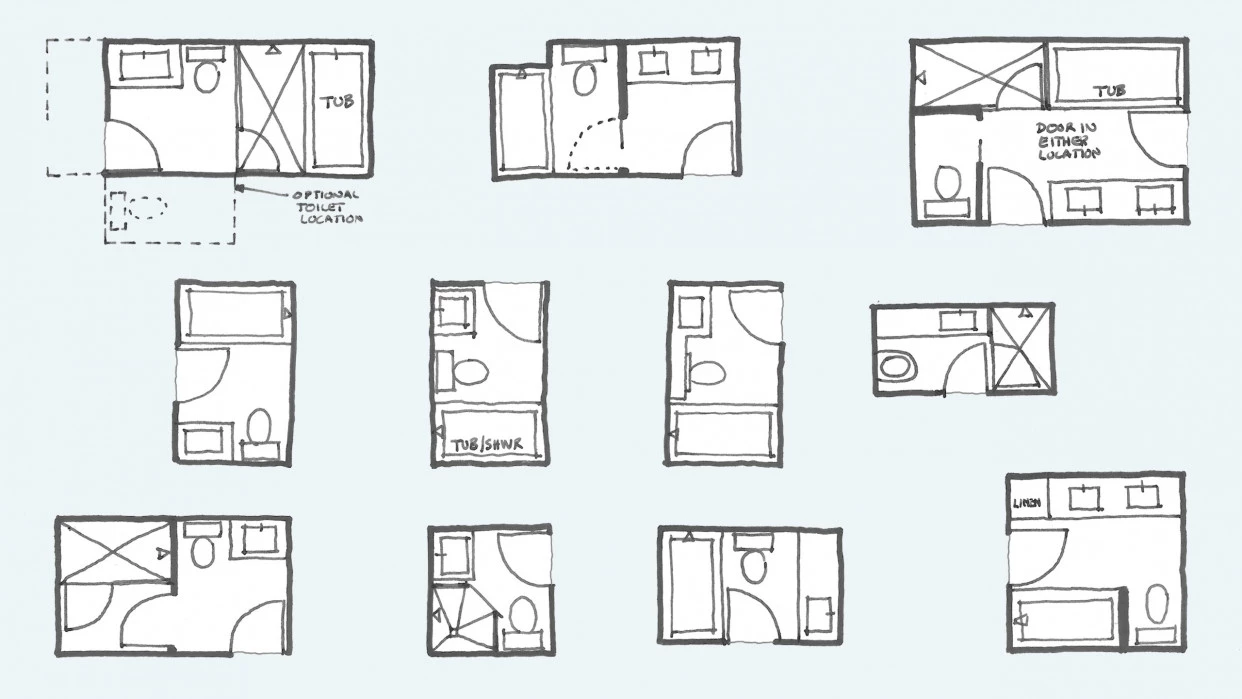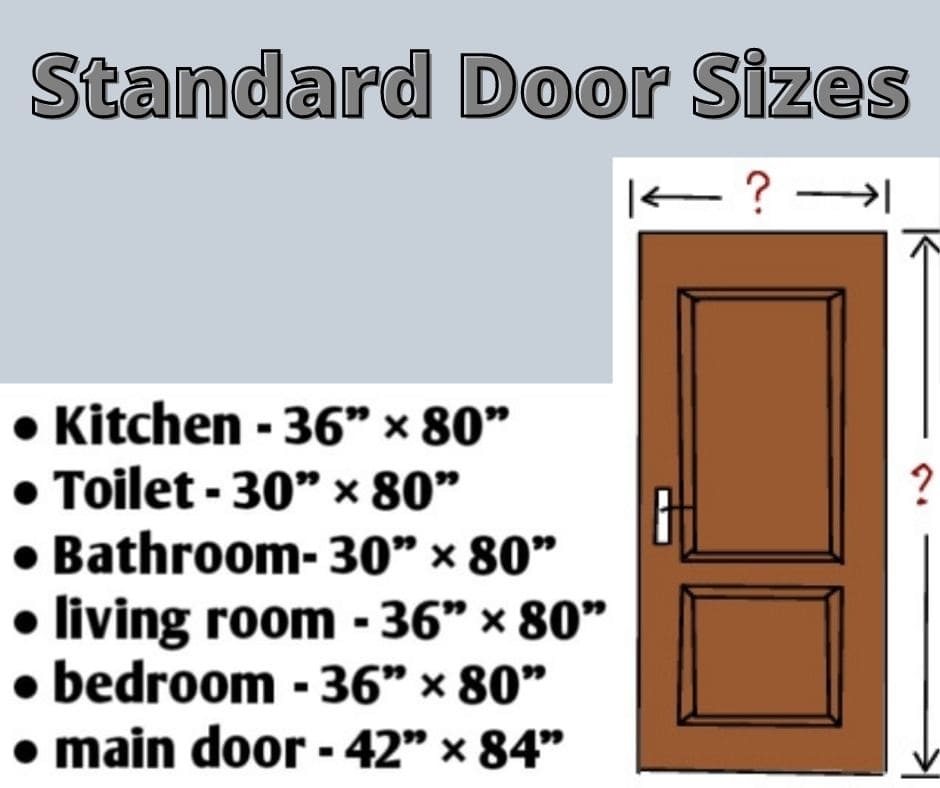Minimum Bathroom Door Width Standards and Regulations

Ensuring accessibility and safety in bathrooms is paramount, and this is where minimum bathroom door width standards and regulations come into play. These regulations are designed to create a safe and comfortable environment for everyone, including individuals with disabilities. Let’s delve into the specifics of these regulations.
Minimum Door Width Standards for Residential and Commercial Bathrooms
The minimum bathroom door width requirements vary depending on whether the bathroom is in a residential or commercial setting.
- Residential Bathrooms: In most residential settings, the minimum bathroom door width is generally 32 inches (81.3 cm). This width allows for comfortable movement and ensures sufficient space for individuals to enter and exit the bathroom without difficulty.
- Commercial Bathrooms: Commercial bathrooms, especially those in public spaces, have stricter requirements. The minimum door width in these settings is typically 36 inches (91.4 cm) to accommodate individuals using wheelchairs or other mobility devices.
Building Codes and Their Requirements for Bathroom Door Widths
Various building codes and accessibility guidelines dictate the minimum bathroom door width requirements. Here are some examples:
ADA (Americans with Disabilities Act)
The ADA is a comprehensive set of regulations that ensures equal access and opportunity for individuals with disabilities. According to the ADA, the minimum clear opening width for a bathroom door must be 32 inches (81.3 cm). This requirement applies to all public and commercial facilities.
IBC (International Building Code)
The IBC is a widely adopted building code in the United States and many other countries. The IBC also specifies minimum bathroom door widths based on the occupancy type and intended use of the building. For example, in residential buildings, the minimum door width is 32 inches (81.3 cm), while in commercial buildings, the minimum door width is typically 36 inches (91.4 cm).
Minimum Door Width Required for Wheelchair Accessibility
For wheelchair accessibility, the minimum clear opening width for a bathroom door is 32 inches (81.3 cm). This width allows for sufficient maneuvering space for individuals using wheelchairs. However, for optimal accessibility, it is recommended to have a door width of 36 inches (91.4 cm) or wider.
Factors Influencing Bathroom Door Width Selection

While minimum bathroom door width standards are essential for ensuring basic accessibility, various factors can influence the final choice of door width beyond these minimums. These factors consider not only functional aspects but also the overall design and comfort of the bathroom space.
Room Size and Layout
The size and layout of the bathroom significantly impact the ideal door width. Smaller bathrooms may benefit from narrower doors to maximize usable space, while larger bathrooms can accommodate wider doors, offering a more spacious feel. For instance, in a compact bathroom, a 28-inch door might be sufficient, while a larger bathroom might necessitate a 32-inch or even wider door. Additionally, the layout of fixtures within the bathroom can influence the door width. If the bathroom features a walk-in shower or a large bathtub, a wider door might be needed to allow for easier access and movement.
User Mobility and Accessibility Needs
The needs of the users, especially those with mobility limitations, are crucial considerations for door width selection. Wider doors, typically 32 inches or more, offer ample space for wheelchair users and those using mobility aids to maneuver easily. For individuals with limited mobility, a wider door might be necessary to accommodate the use of walkers or canes. In cases where the bathroom is designed for a specific individual with mobility challenges, it’s essential to consult with an accessibility specialist to determine the optimal door width.
Furniture Placement and Traffic Flow
The placement of furniture within the bathroom, such as vanities, cabinets, and towel racks, can influence the required door width. A wider door might be necessary if the furniture is positioned close to the door, requiring additional space for opening and closing the door without obstruction. Furthermore, the traffic flow within the bathroom, particularly if it’s a shared space, should be considered. A wider door can facilitate smooth movement and prevent congestion, especially if multiple people are using the bathroom simultaneously.
Personal Preferences and Design Aesthetics, Minimum bathroom door width
Beyond functional considerations, personal preferences and design aesthetics play a role in choosing bathroom door widths. Some individuals may prioritize a spacious feel and opt for wider doors, even if minimum standards are met. Others might prefer a more streamlined look and choose a narrower door to complement the bathroom’s design. The overall style and theme of the bathroom can also influence the choice of door width, with contemporary designs often featuring wider doors to create a sense of openness and modernity.
Table Comparing Bathroom Door Widths
| Door Width (inches) | Suitability |
|---|---|
| 24 | Minimum standard, suitable for small bathrooms with limited space |
| 28 | Common width, suitable for most bathrooms, offers comfortable access |
| 32 | Ideal for larger bathrooms, provides ample space for movement and accessibility |
| 36+ | Wide doors, often used for wheelchair accessibility or spacious designs |
Benefits of Wider Bathroom Doors

While meeting the minimum bathroom door width requirements is essential, opting for wider doors can significantly enhance the functionality and accessibility of your bathroom. Wider bathroom doors offer a multitude of benefits beyond mere compliance with regulations, creating a more comfortable and user-friendly space for everyone.
Enhanced Accessibility for People with Mobility Impairments
Wider bathroom doors are crucial for accommodating individuals with mobility impairments, making it easier for them to navigate the space with wheelchairs, walkers, or other assistive devices. This includes:
- Wheelchair accessibility: Wider doors provide ample clearance for wheelchairs to pass through without obstruction, ensuring safe and independent movement.
- Walker accessibility: Individuals using walkers also benefit from wider doorways, as they can maneuver more easily without bumping into the door frame or struggling to turn.
- Improved maneuverability: Wider doorways allow for greater ease of movement for those with limited mobility, reducing the risk of falls and enhancing their independence.
Improved Ease of Movement for Everyone
The benefits of wider bathroom doors extend beyond those with mobility impairments. Even individuals without disabilities can experience improved ease of movement in a bathroom with wider doors. This is particularly beneficial for:
- Carrying items: Wider doorways make it easier to carry laundry baskets, toiletries, or other items in and out of the bathroom without having to squeeze through a narrow opening.
- Passing through with multiple people: When multiple people need to enter or exit the bathroom simultaneously, a wider doorway provides more space and reduces the risk of bumping into each other.
- Increased comfort: A wider bathroom door can create a more spacious and comfortable feel, reducing the feeling of being cramped or confined.
Increased Space for Carrying Items
Wider bathroom doors allow for greater ease of carrying items in and out of the bathroom. This can be particularly beneficial for:
- Laundry baskets: Larger laundry baskets can be easily maneuvered through a wider doorway, reducing the need to bend or contort oneself to fit them through a narrow opening.
- Toiletries and supplies: Carrying multiple toiletries or bathroom supplies becomes much easier with a wider doorway, allowing for more comfortable movement and reducing the risk of dropping items.
- Wheelchairs: Individuals using wheelchairs can easily transport themselves and their belongings through wider doorways without having to squeeze or maneuver awkwardly.
Greater Flexibility in Furniture Arrangement
Wider bathroom doors offer greater flexibility in furniture arrangement, allowing for more efficient use of space and a more personalized layout. This includes:
- Placement of larger furniture: Wider doorways allow for the placement of larger bathroom furniture, such as oversized vanities or walk-in showers, without compromising accessibility.
- Enhanced accessibility: Wider doorways create more space for maneuvering around furniture, improving accessibility for individuals with mobility impairments.
- Improved aesthetics: Wider doorways can enhance the overall aesthetics of the bathroom, creating a more spacious and inviting feel.